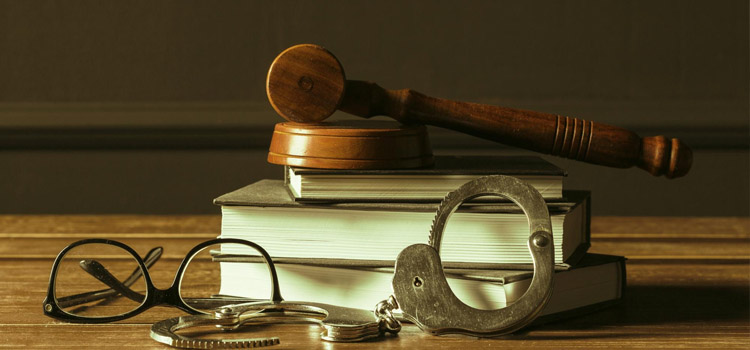27 Stages Of Criminal Cases In India Under Criminal Procedure Code, 1973
Posted On : September 24, 2019

Table of Contents
The criminal trials in India can be be broadly categorized into three stages namely;
A. Pre-trial stage
B. Trial stage
C. Post-trial stage
Now, each stage requires some detailed steps to be fulfilled which are described below.
A. Pre-trial Stage
1. Commission of an offence (cognizable or non cognizable)
Information to police.
- Information of cognizable offence.
- Information of non cognizable offence.
a. Information of cognizable offence :
Under Section 154 of the Code of Criminal Procedure, a FIR or First Information Report is registered. FIR puts the case into motion. A FIR is information given by someone (aggrieved) to the police relating to the commitment of an offense. In case of cyber crimes, online complaint can also be resorted and legal assistance can be taken from cyber crime lawyers.
b. Information of non cognizable offence :
In case of non cognizable offence N.C.R (non cognizable report) is registered by police under section 155 of Cr.P.C. but the police cannot start investigation or arrest the accused without the order of a Magistrate having power to try such case.
2. Complaint to magistrate
Section 2 (d) of the Code of Criminal Procedure defines the term 'complaint as any allegation made orally or in writing to a Magistrate, with a view to his taking action under this Code, that some person, whether known or unknown, has committed an offence, but does not include a police report. On receipt of a complaint a Magistrate has several courses open to him.
He may take cognizance of the offence and proceed to record the statements of the complainant and the witnesses present under Section 200, Cr Thereafter if in his opinion there is no sufficient ground for proceeding he may dismiss the complaint under Section 203, Cr PC. If in his opinion there is sufficient ground for proceeding he may issue process under Section 204, Cr PC.
However, if he thinks fit, he may postpone the issue of process and either inquire into the case himself or direct an investigation to be made by a police officer or such other person as he thinks fit for the purpose of deciding whether or not there is sufficient ground for proceeding (Section 202, Cr PC).
He may then issue process if in his opinion there is sufficient ground for proceeding or dismiss the complaint if there is no sufficient ground for proceeding.
3. Investigation by Police
Police conduct investigation for
- For collection of evidence;
- Interrogation statement of accused;
- Statement of witnesses;
- Scientific analysis / opinion if required. During this time, at any stage decided by investigating agency, accused persons can be arrested.
In case of cognizable offence police can start investigation after the registration of FIR, no prior approval of magistrate is necessary. But in case of non cognizable offence, prior approval of magistrate is necessary to start investigation.
4. Anticipatory Bail
Upon registration of FIR for cognizable criminal offence the accused may make an application for anticipatory bail in session court or high court. If anticipatory bail is granted then the accused cannot be arrested. If anticipatory bail is rejected then the accused can be arrested without warrant. Since it is a serious matter restricting the freedom of accused person, criminal lawyer in Kolkata should be contacted without any laches for cases in Kolkata.
5. Arrest of the Accused
In case of cognizable offence police can arrest the accused without warrant. However in case of non cognizable offence prior approval of magistrate is necessary.
6. Production of accused to magistrate
Within 24 hours of the arrest the accused shall be produced before a magistrate having jurisdiction to try such cases.
7. Remand
Whenever an accused is arrested for any offence and police cannot complete investigation within 24 hours then such person is produced before a magistrate for seeking extension of police or magisterial custody.
8. After investigation is completed
If investigating agency feels a prima facie case is made out, charge sheet is filed in Court through the public prosecutor. If police feels that no prima facie case is made out, a final report filed in Court.
9. Cognizance of Offence by Magistrate
After filling of charge sheet the next stage is taking cognizance of offence by magistrate under section 190 of the Criminal Procedure Code. In the language of the Hon'ble Apex Court employed in its earliest decision R.R.Chari v. State of U.P AIR 1951 SC 207 “taking cognizance does not involve any formal action or indeed action of any kind but occurs as soon as a Magistrate as such applies his mind to the suspected commission of offence"
10. Service of summons/warrant to accused and Process to compel appearance under chapter 6 of Cr.P.C.
The Court sends summons to the accused for appearance in the court on the due date.
11. Appearance of accused before court & engagement of advocate.
The accused appears before the court along with an Advocate of his choice to defend him and seek bail if anticipatory bail is not taken.
12. Filing bail application/ furnishing surety.
The accused moves an application for bail and once the bail is granted furnishes the required suety to the court as per the order.
13. Decision is taken by the Court after hearing the public prosecutor and the counsel for defence
On question of Charge sheet:
- Court can reject charge sheet, in which case the accused is discharged. Or,
- Court can accept that a prima facie case is made out, frame the charges, and post the case for trial. Case goes to next stage.
- Court can accept the final report- case is closed and accused is discharged. Or,
- Court can reject the final report, and direct the police to further investigate the case. Case goes back to the Stage of investigation. Or, c. If the Court direct the case to be posted for trial. Case goes to next stage.
14. Framing Of Charge
After considering the police report and other important documents the accused is not discharged then the court frames charges under which he is to be trialed.
15. Conviction on plea of guilty
If the accused pleads guilty, the court shall record the plea and may, at discretion convicts the accused.
16. If the accused pleads not guilty
Case is posted for trial to begin the trial of the case and further proceedings as per Criminal Procedure Code.
B. Trial stage
17. Commencement of trial
Generally speaking trial of a case commences when the case is posted for examination of witnesses. Trial may be -
- Sessions trial
- Warrant trial
- Summons trial
- Summary trial
18. Prosecution evidence
After the charges are framed, and the accused pleads guilty, then the court requires the prosecution to produce evidence to prove the guilt of the accused. The prosecution is required to support their evidence with statements from its witnesses. This process is called "examination in chief". The magistrate has the power to issue summons to any person as a witness or orders him to produce any document.
19. Statement of the accused
Section 313 of the Criminal Procedure Code gives an opportunity to the accused to be heard and explain the facts and circumstances of the case. The statements of accused are not recorded under oath and can be used against him in the trial.
20. Defence evidence
An opportunity is given to the accused in a case where he is not being acquitted to produce so as to defend his case. The defense can produce both oral and documentary evidence. In India, since the burden of proof is on the prosecution the defense, in general, is not required to give any defense evidence.
21. Final Arguments
Public Prosecutor and the defence counsel present their arguments.
22. Judgment and sentence by the Court
The final decision of the court with reasons given in support of the acquittal or conviction of the accused is known as judgment.
23. Arguments on sentence
When the accused is convicted, then both sides are invited to give arguments on the punishment which is to be awarded. This is usually done when the person is convicted of an offense whose punishment is life imprisonment or capital punishment.
However when the sentence is pronounced in a summons case, the parties need not argue on the amount of punishment given. The sentence is the sole discretion of the judge.
24. Judgment of Court passing sentence
After the arguments on sentence, the court finally decides what should be the punishment for the accused. While punishing a person, the courts consider various theories of punishment like reformative theory of punishment and deterrent theory of punishment. Court also considers the age, background and history of an accused and the judgment is pronounced accordingly.
C. Post-Trial Stage
25. Appeal (within specified period of limitation)/Revision
Appeal can be filed by party aggrieved by judgment on acquittal / conviction /sentence. On notice being issued to the opposite parties, arguments are placed before Appellate court by defence counsel and the public prosecutor. Or,
Revision Application :
Where there is right of appeal provided but no appeal was filed then in its discretion the Sessions Court or the High Court can entertain a revision to prevent miscarriage of criminal justice system occurred by the orders of the lower court.
26. Judgment of the Appellate Court or Court having revisional jurisdiction.
The Court having such powers can either rebut the lower court judgement or confirm the judgment pronounced by the lower court.
27. Execution of Sentence.
Finally, if the accused is pronounced convicted by all relevant courts and appellate authorities then he is sent to jail.
























